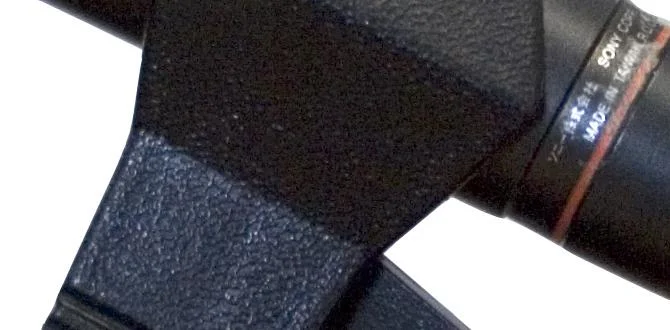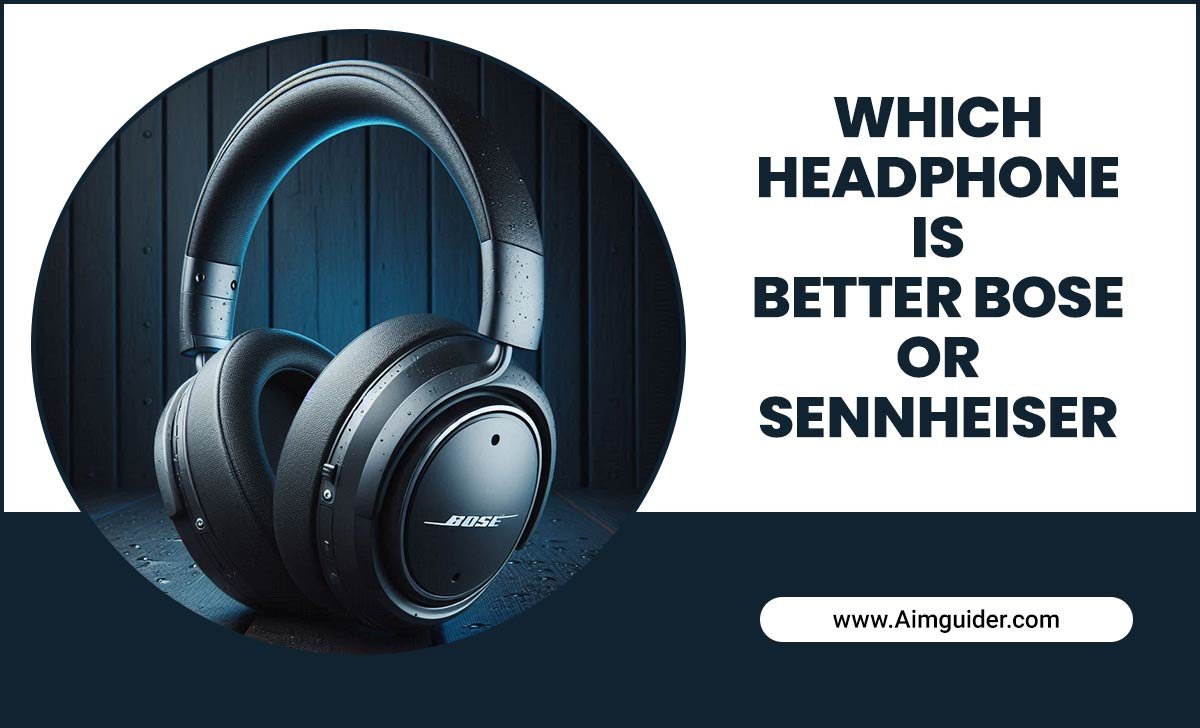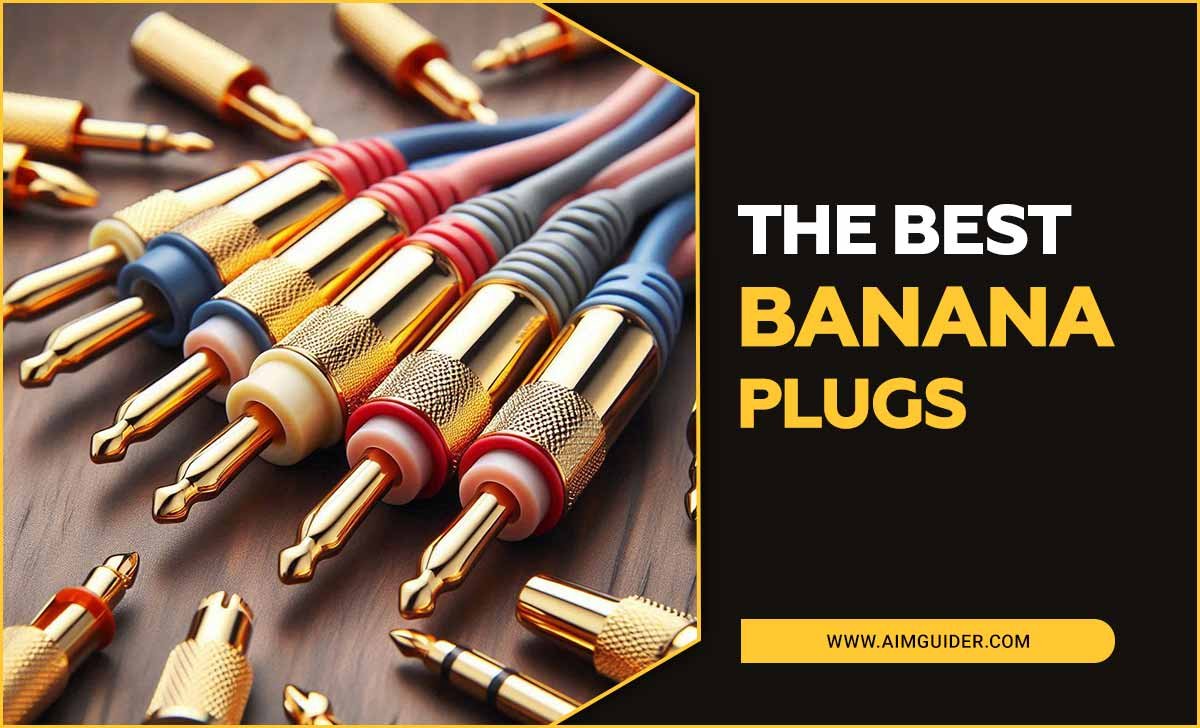Quick Summary:
Choosing the best microphone for YouTube professionals means balancing your content type and budget. For clear voiceovers and interviews, a USB condenser mic is often ideal. For dynamic on-screen presence, a shotgun mic or lavalier might be better. Invest in quality audio to elevate your professional YouTube channel.
Hey creators! Bob E Riley here from Aimguider. Ever feel like your YouTube videos just aren’t hitting the mark on sound quality? You’ve got great visuals, awesome content ideas, but that tinny, distant audio is holding you back. It’s a frustration many new and even seasoned YouTubers face. The good news is, getting professional-sounding audio doesn’t have to be rocket science. It starts with the right microphone, and I’m here to guide you through it step-by-step. We’ll break down what makes a microphone “pro” for YouTube and help you find the perfect fit for your channel. Get ready to make your voice shine!
Why Your Microphone is Your YouTube’s Secret Weapon
Think about your favorite YouTubers. What makes them so engaging? Beyond their personality and visual flair, their audio is often crystal clear. You can hear every word they say, no matter the background noise. This isn’t accidental; it’s the power of a good microphone. For professionals, audio quality isn’t just a nice-to-have; it’s a deal-breaker. Viewers are picky. If your sound is poor, they’re more likely to click away, even if your video looks stunning.
A professional microphone does a few key things:
- Clarity: It captures your voice with richness and detail, making it easy to understand.
- Warmth: It reduces the harshness often found in built-in camera or laptop mics.
- Background Noise Reduction: Good mics can help minimize distracting room echo or ambient sounds.
- Consistency: It ensures your audio levels are stable throughout your videos.
Investing in a quality mic is one of the smartest upgrades you can make for your YouTube channel. It shows you’re serious about your craft and respect your audience’s listening experience.
Understanding Microphone Types for YouTube
Before we dive into brands and models, let’s understand the main types of microphones you’ll encounter. Each has its strengths and is suited for different YouTube production styles.
Condenser vs. Dynamic Microphones
This is a fundamental distinction. Condenser mics are known for their sensitivity and detailed sound capture, making them great for quiet environments and capturing nuanced vocals. Dynamic mics are more rugged and less sensitive, making them ideal for louder environments or capturing raw, powerful sound without distortion.
Condenser Microphones
- Pros: Highly sensitive, capture subtle details, excellent for voiceovers and studio recording.
- Cons: Require phantom power (often built into audio interfaces or mixers), more fragile, can pick up more background noise.
Dynamic Microphones
- Pros: Durable, handle high sound pressure levels (loud sounds) well, don’t require phantom power, less prone to picking up background noise.
- Cons: Less sensitive, may not capture as much detail as condensers, can sound “quieter” and require more gain.
Polar Patterns: Where the Mic Listens
The polar pattern of a microphone describes its sensitivity to sound coming from different directions. For YouTube, knowing this helps you choose a mic that focuses on your voice and ignores unwanted noise.
Common Polar Patterns:
- Cardioid: Picks up sound from the front, rejects sound from the back and sides. This is the most common and useful pattern for solo YouTubers, as it focuses on your voice while minimizing room noise.
- Supercardioid/Hypercardioid: Even tighter front pickup than cardioid, with very strong side rejection. They have a small pickup lobe at the rear, which can sometimes pick up reflections. Excellent for isolating a sound source.
- Omnidirectional: Picks up sound equally from all directions. Useful for capturing ambient sound or in a perfectly treated room where you want to capture natural acoustics, but generally not ideal for solo commentary due to picking up too much room tone.
- Bidirectional (Figure-8): Picks up sound equally from the front and back, but rejects sound from the sides. Useful for interviews where two people are facing each other with the mic in between.
For most YouTube professionals, a cardioid pattern is the go-to choice for vocals.
Microphone Connectivity: USB vs. XLR
This is crucial for how you’ll connect your microphone to your computer or recording device.
USB Microphones
These are incredibly popular for beginners and even many professionals because they plug directly into your computer’s USB port. They have a built-in analog-to-digital converter and often a headphone jack for monitoring. They are plug-and-play and incredibly convenient.
- Pros: Easy to set up, no extra equipment needed, great for beginners, portable.
- Cons: Limited upgrade path (you can’t easily swap preamps or interfaces), can sometimes have slightly lower audio quality than XLR setups, limited mic flexibility.
XLR Microphones
XLR mics use a three-pin connector and require an external audio interface, mixer, or USB-C audio adapter to connect to your computer. This setup offers more flexibility and often higher audio quality.
- Pros: Superior audio quality, wide range of microphone choices, flexible setup, industry standard for professional audio.
- Cons: Requires additional equipment (audio interface/mixer), more complex setup, less portable.
Best Microphone Types for Different YouTube Content
The “best” microphone depends heavily on what you do on YouTube. Here’s a breakdown to help you choose:
1. For Voiceovers, Podcasts, and Talking Head Videos
If your content primarily involves you speaking directly to the camera or recording narration, you need a microphone that excels at capturing clear, detailed vocals. For professionals, this often means a high-quality condenser microphone.
Recommended Type: Large-Diaphragm Condenser (USB or XLR)
These mics are designed to capture the nuances of the human voice. With a cardioid polar pattern, they focus on your voice while minimizing room echo.
Why it’s good for professionals: Delivers a clear, broadcast-quality sound that makes your content sound polished and authoritative. Perfect for conveying information, telling stories, and building trust with your audience.
Top Picks (Examples):
- USB (Great for ease of use):
- Blue Yeti: A long-time favorite for its versatility, multiple polar patterns, and ease of use.
- Rode NT-USB Mini: Compact, simple, and delivers excellent sound quality.
- Audio-Technica AT2020 USB+: A step up in build and sound, offering a more professional tone.
- XLR (For higher fidelity and flexibility):
- Rode NT1-A: Renowned for its incredibly low self-noise and a bright, detailed sound.
- Shure SM7B: A legendary dynamic mic favored by many podcasters and broadcasters for its warm, forgiving sound, especially when dealing with less-than-perfect acoustics. It excels at taming sibilance.
- Audio-Technica AT2020 (XLR version): A more affordable entry into the XLR condenser world.
2. For Gaming, Streaming, and Live Commentary
Gamers and streamers need a mic that can cut through the noise of gameplay, react quickly, and sound energetic. While some opt for condensers, dynamic mics and specialized gaming mics are often preferred for their ability to handle loud in-game sounds and reject background distractions.
Recommended Type: Dynamic Microphone (USB or XLR) or Gaming Headset Mic
A dynamic mic, especially with a cardioid pattern, is excellent at isolating your voice from game audio and keyboard clicks. Some dedicated gaming mics offer excellent noise suppression.
Why it’s good for professionals: Your commentary needs to be heard clearly over intense game audio. A good dynamic mic ensures your reactions and calls are crisp and engaging, keeping viewers tuned in.
Top Picks (Examples):
- USB Dynamic:
- Rode PodMic: Designed for voice, it’s robust and offers a great sound for its price.
- Shure MV7: A hybrid USB/XLR mic that offers the best of both worlds, inspired by the SM7B. Easy to use with USB, powerful with XLR.
- XLR Dynamic:
- Shure SM58: A workhorse mic, incredibly durable and designed for vocals.
- Electro-Voice RE20: Another broadcast standard, known for its “Variable-D” technology that minimizes proximity effect.
- Gaming Headsets (for convenience):
- HyperX Cloud Alpha/Alpha S: Excellent sound quality and a surprisingly good detachable mic.
- SteelSeries Arctis Pro Wireless: Top-tier audio for both listening and speaking.
3. For Vlogs, On-Location Interviews, and Run-and-Gun Videos
When you’re out in the field, capturing clear audio can be challenging due to wind, ambient noise, and movement. You need a mic that’s directional and easy to mount.
Recommended Type: Shotgun Microphone or Lavalier Microphone (Lapel Mic)
Shotgun Mics: These are highly directional, picking up sound from a narrow cone in front of them. They are often mounted on cameras or boom poles.
- Pros: Excellent at isolating sound from the front, good for capturing dialogue from a distance, can be mounted on cameras.
- Cons: Can still pick up reflections in noisy environments, require careful aiming, often need wind protection (a “dead cat” or “blimp”).
- Top Picks: Rode VideoMic series (e.g., VideoMic Pro+, VideoMic NTG), Sennheiser MKE 400. Many will connect via a 3.5mm jack or have XLR outputs.
Lavalier Mics: These small clip-on mics are attached to the subject’s clothing and get very close to the sound source, offering excellent isolation.
- Pros: Very close to the voice, minimizing background noise, discreet, good for interviews with multiple people (if you have multiple mics).
- Cons: Can sound a bit muffled if not placed correctly, prone to clothing rustle, wired versions can be restrictive, wireless systems can be expensive.
- Top Picks: Rode Wireless GO II (wireless system), Deity V-Mic D4 Duo (camera-mounted with lav option), Generic wired lav mics for phones/cameras (e.g., Boya BY-M1). Look for “lavalier microphone” or “lapel microphone.”
4. For Unboxing, Product Reviews, and ASMR Content
This type of content often requires capturing subtle sounds, textures, and close-up audio. High sensitivity and detail are key.
Recommended Type: Large-Diaphragm Condenser (USB) or Stereo Microphone
A sensitive condenser mic will pick up the delicate sounds of items being handled. Stereo mics can capture a wider, more immersive soundscape.
Why it’s good for professionals: The tactile nature of these videos relies heavily on immersive sound. Capturing the crinkle of packaging, the snap of a lid, or the whisper of fabric can significantly enhance the viewer’s experience and make your channel feel premium.
Top Picks (Examples):
- USB Condensers: Blue Yeti, Rode NT-USB+, Aston Origin (condenser, XLR, but amazing for detail).
- Stereo Mics: Rode NT4 (XLR, true stereo), Zoom H4n Pro Handy Recorder (can act as a stereo mic).
Key Features to Look for in a Professional YouTube Microphone
Beyond the basic type, here are the features that elevate a microphone from “hobbyist” to “professional”:
1. Build Quality and Durability
Professional gear is built to last. Look for mics made from metal with robust grilles. This is especially important for mics that travel or get handled frequently.
2. Low Self-Noise (Self-Noise Rating)
Every microphone produces a small amount of electronic hiss, known as self-noise. For professional audio, you want this number to be as low as possible. It’s typically measured in dBA (A-weighted decibels).
Target: Under 15 dBA is good, under 10 dBA is excellent for condensers. Dynamic mics typically have much lower self-noise because they don’t rely on as much internal amplification.
A great resource for understanding technical specifications like self-noise is the Sengpiel Audio microphone calculator, which helps demystify gain staging and noise levels.
3. Frequency Response
This refers to how accurately a microphone captures sound at different frequencies (low bass, mid-range, high treble). A “flat” or relatively neutral frequency response is often preferred for voice, as it captures the natural tone without excessive boosting or cutting of certain frequencies. Some mics have a slight “presence peak” in the upper mids (2-5 kHz) which can help vocals cut through a mix.
4. Included Accessories
What comes in the box? For professional use, look for:
- Shock Mount: Isolates the mic from vibrations from your desk or stand, preventing rumble.
- Pop Filter/Windscreen: Reduces plosives (“P” and “B” sounds) that can cause thumps.
- Sturdy Stand/Mount: A reliable way to position the mic.
- Quality Cables: For XLR mics, a good quality XLR cable is a must.
5. Monitoring Capabilities
Many USB mics and audio interfaces have a headphone jack that allows you to listen to yourself in real-time (zero-latency monitoring). This is crucial for catching issues as you record, ensuring your levels are right and you’re speaking clearly.
Setting Up Your Professional Microphone
You’ve got the mic; now let’s make it sound its best.
Step 1: Placement is Key
For voiceovers and talking heads: Position the mic a comfortable distance from your mouth (typically 6-12 inches, or one to two fist-widths). If using a condenser, speak slightly off-axis (not directly into the center of the grille) to further reduce plosives. For dynamic mics, you can often get closer.
For vlogs/on-location: Shotgun mics should be pointed directly at the sound source. Lavalier mics should be clipped to the collar or lapel, about two finger-widths below the chin, facing upwards.
Step 2: Desk Setup and Acoustics
Your recording environment matters! Even the best mic can sound bad in a room with lots of hard, reflective surfaces (like bare walls or windows).
- Reduce Echo: Record in a space with soft furnishings like carpets, curtains, or upholstery. You can also hang blankets on walls or use acoustic foam panels (though these are more of an educated DIY project than basic setup).
- Desk Stability: Use a shock mount to isolate your mic from desk vibrations. If possible, use a boom arm or mic stand that doesn’t attach directly to your desk.
For deeper dives into acoustic treatment, resources from organizations like the Acoustic Testing are invaluable, providing scientific approaches to soundproofing and acoustics.
Step 3: Connecting Your Microphone
USB Mic: Simply plug it into a USB port on your computer. Your operating system should recognize it. You may need to select it as the default input device in your sound settings or within your recording software (like OBS Studio or Adobe Premiere Pro).
XLR Mic:
- Connect the XLR microphone to an audio interface or mixer using an XLR cable.
- Connect the audio interface/mixer to your computer via USB.
- Ensure the audio interface/mixer is powered on and recognized by your computer.
- In your recording software, select the audio interface/mixer as your audio input device.
- Turn on +48V phantom power on your interface/mixer if you are using a condenser microphone. Do NOT use phantom power with most dynamic mics or ribbon mics, as it can damage them.
Step 4: Setting Gain Levels
Gain is the microphone’s sensitivity to sound volume. You want to set it so your voice is loud enough without clipping (distorting).






